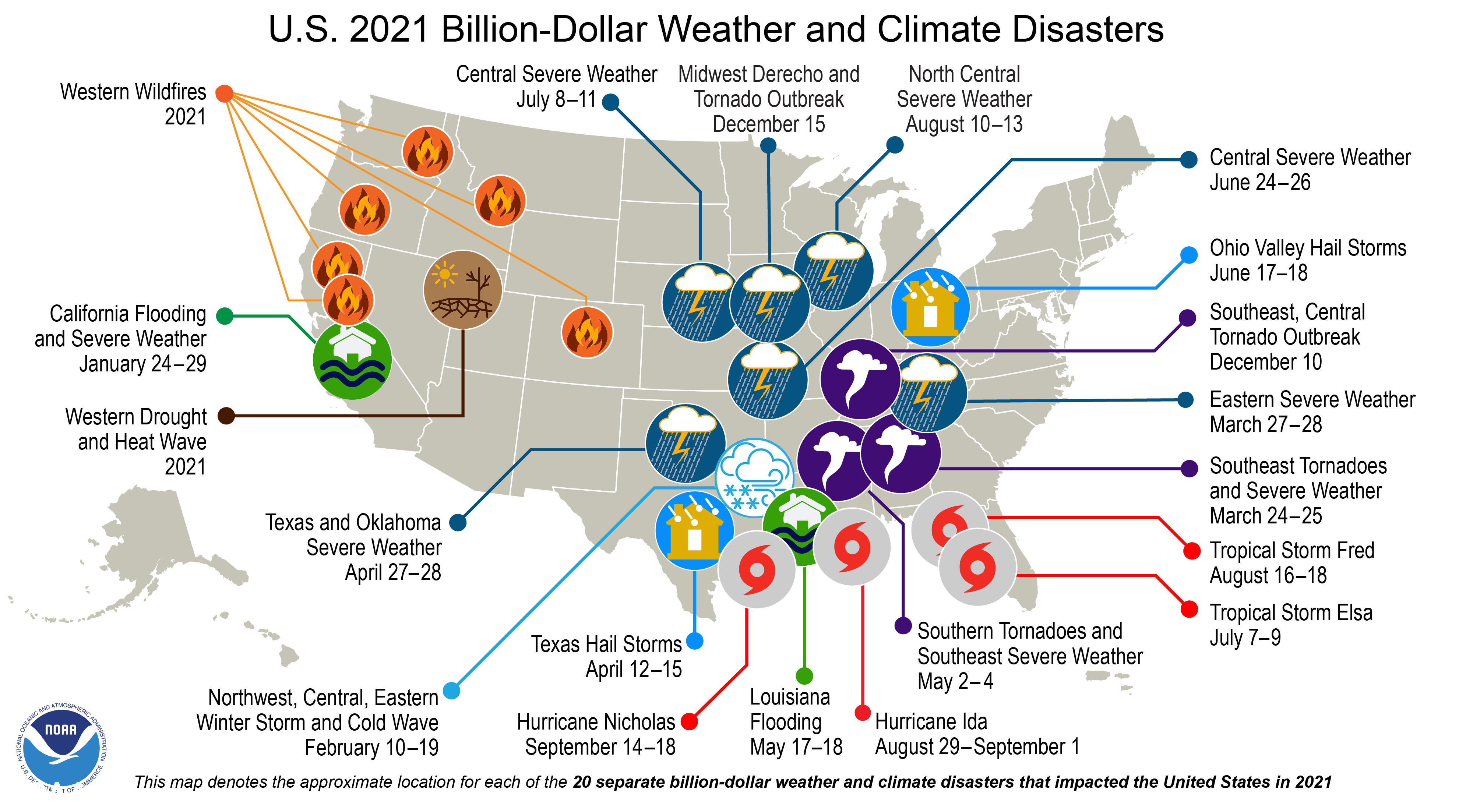2021 was America’s fourth hottest year on record with 20 separate billion-dollar climate disasters
At least 688 people were killed last year in the most disaster-related fatalities for the contiguous US in a decade
Your support helps us to tell the story
From reproductive rights to climate change to Big Tech, The Independent is on the ground when the story is developing. Whether it's investigating the financials of Elon Musk's pro-Trump PAC or producing our latest documentary, 'The A Word', which shines a light on the American women fighting for reproductive rights, we know how important it is to parse out the facts from the messaging.
At such a critical moment in US history, we need reporters on the ground. Your donation allows us to keep sending journalists to speak to both sides of the story.
The Independent is trusted by Americans across the entire political spectrum. And unlike many other quality news outlets, we choose not to lock Americans out of our reporting and analysis with paywalls. We believe quality journalism should be available to everyone, paid for by those who can afford it.
Your support makes all the difference.The US had 20 separate, billion-dollar climate and weather disasters in 2021 during its fourth-hottest year on record, according to the country’s leading authority for environmental data.
The annual summary, published on Monday by the National Centers for Environmental Information (NCEI), found that extreme events killed at least 688 people in 2021 – the most disaster-related fatalities for the contiguous US in a decade – and left dozens more injured.
The climate crisis is driving extreme events across the US including deadly heatwaves, months-long wildfires, dangerous flash floods and powerful hurricanes.
Last year saw the second-highest number of extreme disasters following a record 22 events in 2020.
These were listed as:
- An extreme deep freeze which saw power grids buckle across parts of the South and Texas in February 2021
- Wildfire outbreaks across across Arizona, California, Colorado, Idaho, Montana, Oregon and Washington
- A drought and heatwave event across the US West over summer and into fall
- Two flood events in California and Louisiana
- Three tornado outbreaks (including a series of monster twisters which devastated Kentucky and neighboring states in December)
- Four tropical cyclones – Elsa, Fred, Ida and Nicholas
- Eight severe weather events, including a derecho in the Midwest last month.

Damages from these disasters totaled approximately $145bn, an increase of $40bn in damages from 2020’s similarly long list of disasters.
The most costly event was Hurricane Ida in September which made landfall in Louisiana as a Category-4 storm, pummeling the region with winds of up to 150mph. Damages totalled $75bn, placing Ida among the top-five most costly US hurricanes on record in the past 40 years.
Overall the Atlantic hurricane season was busier than usual with 21 named storms, the third most-active on record.
The historic deep freeze in early 2021 was the costliest winter storm on record at $24bn.
The climate crisis had led to annual average temperatures increasing by 1.8F across the contiguous US since the beginning of the 20th century, according to the most recent National Climate Assessment.
In 2021, The average contiguous US temperature was 54.5 degrees Fahrenheit (F) – 2.5 degrees above the 20th-century average – and the fourth-warmest year in the 127 years since records began.
Parts of North America experienced significant temperature anomalies in 2021, resulting in the warmest June on record for the continent. In the northwest of the US and Canada, an “exceptional” heatwave descended in June, with maximum temperature records broken repeatedly on consecutive days.
The hot and dry conditions drove raging wildfires throughout the summer. The Dixie Fire, the second largest fire recorded in California’s history, became the first ever to crest the Sierra Nevada mountain range. Along with widespread destruction, pollution from the wildfire led to a drop in air quality for thousands of people in the west and beyond, as particulate matter drifted across the US.
The final month of 2021 was the hottest December ever recorded in the US. With an average temperature of 39.3F in the contiguous US, it was 6.7 degrees above average.
Ten states – Alabama, Arkansas, Kansas, Louisiana, Mississippi, Missouri, Nebraska, New Mexico, Oklahoma and Texas – also recorded their hottest-ever December.
The US Drought Monitor revealed that drought remained fairly significant in the US, outside of Alaska and Hawaii, covering more than half (55.5 per cent) of the country in December.
Separate analysis published on Monday by the European Union’s Copernicus Climate Change Service (C3S) found that 2021 was the fifth-hottest year on record globally, and that emissions of greenhouse gases (GHG) carbon dioxide and methane, main drivers of the climate crisis, continue to rise.
The annual analysis also found that the seven hottest years on record were the last seven, by a clear margin.
To stabilize Earth’s temperature and prevent an ever-worsening spiral of climate disasters, nations have pledged to reach net-zero emissions by 2050.
This means that GHG emissions, largely caused by the burning of fossil fuels, must be brought down by around 50 per cent by the end of this decade.

Join our commenting forum
Join thought-provoking conversations, follow other Independent readers and see their replies
Comments